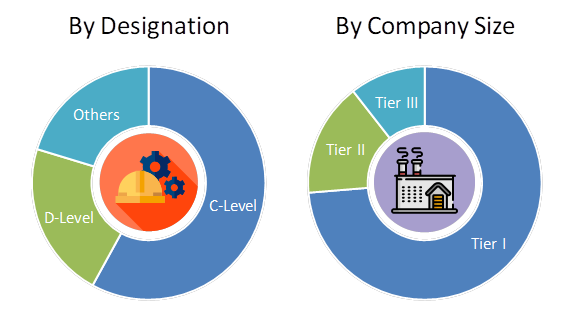| Status : Published | Published On : Nov, 2024 | Report Code : VRSME9162 | Industry : Semiconductor & Electronics | Available Format :

|
Page : 190 |
Global IoT Valve Market Size & Share | Growth Forecast Report 2030
Industry Insights By Technology (Pneumatic Actuators, Electric Actuators, Hydraulic Actuators), By Valve Type (Ball Valves, Globe Valves, Butterfly Valves, Check Valves, Gate Valves, and others), By Industry (Water and Wastewater, Power Generation, Oil and Gas, Chemicals, Food and Beverages, and other), By Application (Remote Monitoring and Control, Predictive Maintenance, Energy Management, and other), and By Geography (North America, Europe, Asia Pacific and Middle East & Africa).
Industry Overview
The global IoT valve market size was valued at USD 86.5 billion in 2023. It is likely to grow up to USD 125.3 billion by 2030 at a CAGR of 4.7% during the forecast period ranging between 2025 and 2030.

Most industries today are moving towards automation, and this increasing demand is one of the most significant factors driving the growth of the market. In these industries, IoT valves play a significant role in increasing efficiency and productivity. Apart from that, the implementation of these advanced valves also promotes real-time monitoring and reduces downtime. Moreover, the shift towards Industry 4.0 and its higher adoption along with smart factory initiatives also contributes to the demand for efficient IoT-enabled solutions to streamline processes and increase productivity, which eventually drive the market growth.
Just as the name implies, IoT valves utilize advanced Internet of Things (IoT) technology. These are smart valves that allow better control and monitoring. It also promotes automation and remote control of the flow of gas and fluid across a wide range of commercial and industrial settings. The mechanism incorporates actuators, sensors, and advanced modules for effective communication. Together, these components facilitate the gathering of useful data in real-time, which helps improve operational efficiency and productivity. These valves are extensively used in water management, manufacturing, power generation, wastewater management, chemical sectors, and oil & gas industries.
Global IoT Valve Market Report Coverage
|
Report Metric |
Details |
|
Historical Period |
2018 - 2023 |
|
Base Year Considered |
2024 |
|
Forecast Period |
2025 - 2030 |
|
Market Size in 2024 |
U.S.D. 86.5 Billion |
|
Revenue Forecast in 2030 |
U.S.D. 125.3 Billion |
|
Growth Rate |
4.7% |
|
Segments Covered in the Report |
By Technology, By Valve Type, By Industry and By Application |
|
Report Scope |
Market Trends, Drivers, and Restraints; Revenue Estimation and Forecast; Segmentation Analysis; Impact of COVID-19; Companies’ Strategic Developments; Market Share Analysis of Key Players; Company Profiling |
|
Regions Covered in the Report |
North America, Europe, Asia Pacific and Middle East & Africa |
Industry Dynamics
Global IoT Valve Market Trends/ Growth Drivers:
Growing automation initiatives across industries and IoT integration
The growth of the global IoT market is mainly attributed to the rising demand for automation across a wide range of industries and the integration of IoT technology. Using IoT valves allows these industries to monitor data in real time and make more effective decisions based on proven and precise data analysis. This reduces downtime and operation costs and enhances productivity and operational efficiency.
Another significant growth driver of the market is the spread of smart factories and the growing demand for predictive maintenance. In addition, the growth of the market is further fueled by the extensive use of these sophisticated valves in projects that support green technology and energy efficiency in systems.
Also, the growing focus on the preservation of energy, higher sustainability, resource and utilities optimization across industries, and the growing need to reduce wastage and precise control promote market growth. Furthermore, growing investments in renewable energy projects and systems, smart grids, and water conservation projects promote the growth of the market further. Additionally, supporting government regulations and incentives to promote the adoption of green technologies, rising investment in and adoption of Industry 4.0, significant developments in wireless communication, and innovations in cloud-based solutions for valve control and supervision fuel market growth.
Global IoT Valve Market Challenges
Technical complexity and high initial expense
The use of IoT valve systems needs a high initial investment due to the high cost of these valves. In addition, the additional cost of integration, installation, and maintenance is significantly high. This is a significant challenge that deters small and medium-sized enterprises (SMEs) from adopting such systems due to financial constraints and prevents faster and smoother growth in the global IoT valve market. Moreover, the technical complexity of integrating these sophisticated systems with the existing mechanism is another challenge that deters market growth. This is mainly due to the complicacies in ensuring data security across different industries' networks. Furthermore, the absence of a standard regulatory framework across different regions and a lack of expert professionals for operation further hinder the growth of the market.
Global IoT Valve Market Opportunities
Rapid development in emerging economies
Significant growth opportunities for the global IoT valve market are presented by the rapid developments in emerging economies. There is a significant rise in IoT adoption in these economies due to higher urbanization, industrialization, and growing government investments and support for smart technology and infrastructure projects. All these result in higher adoption of IoT-enabled efficient solutions. This helps in optimizing resources and improving efficiency. Furthermore, innovations in wireless communication and development in low-power technologies promote communication and reduce distribution costs, which makes IoT valves more accessible, thereby expanding its reach to a wider market. Novel growth opportunities are also created due to the rising emphasis on renewable energy systems and sustainability.
Recent Devlopments by the Key Players
Canatu has collaborated with DENSO Corporation to advance the commercialization of transparent heaters along with accelerating new product development. Canatu and DENSO shall strengthen mass production technology, their cooperation in research and development, and global supply chain exploration. This partnership also leverages Canatu’s carbon nanotube technology which can deliver new value-add to customers around sustainable mobility.
Denso (Japanese auto components) partnered with T-Hub (Hyderabad’s well known start-up incubator) to engage with automotive start-ups for advanced mobility solutions. This partnership shall break down complex challenges, generate ideas and conduct a search for solutions that are aligned with its vision of next-generation.
Global IoT Valve Market Segmentation
VynZ Research provides an analysis of the key trends in each segment of the Global IoT Valve Market Market report, along with forecasts at the regional and country levels from 2025-2030. Our report has categorized the market based on valve type, industry, and application.
Insight by Technology
- Pneumatic Actuators
- Electric Actuators
- Hydraulic Actuators
The pneumatic actuators segment leads being reliable and cost-effective
Pneumatic Actuators, Electric Actuators, Hydraulic Actuators, are the primary categories among others of theglobal IoT valve market based on technology. Out of all these subsegments, the pneumatic actuators segment leads the market as they are more reliable and cost-effective. Also, these valves are extremely useful for manufacturing, water management, and oil and gas sectors as these can operate efficiently in extreme settings. Furthermore, simple and little maintenance requirements and robust performance increase their demand for industrial IoT applications and automation, which boosts the growth of this segment.
Insight by Valve Type
- Ball Valves
- Globe Valves
- Butterfly Valves
- Check Valves
- Gate Valves
- others
The ball valves segment leads the market due to higher durability and versatility
Based on the diverse valve types, the different categories of the global IoT valve market include Ball Valves, Globe Valves, Butterfly Valves, Check Valves, Gate Valves, and others. Among all these segments, the dominating segment is ball valves. Its prominence is attributed to higher durability and greater versatility. These valves allow superior flow control. Industry experts believe that this particular segment will grow significantly during the forecast period due to growing adoption in major industries such as water distribution, HVAC, and oil and gas. Besides, these sophisticated valves facilitate remote monitoring, automation, and are every easy to fit into existing IoT solutions. This increases its demand and thereby fuels the market growth.
Insight by Industry
- Water and Wastewater
- Power Generation
- Oil and Gas
- Chemicals
- Food and Beverages
- other
The oil and gas segment dominates due to the growing need
According to industry, the global IoT valve market is divided into Water and Wastewater, Power Generation, Oil and Gas, Chemicals, Food and Beverages, and other segments. Among them, the oil and gas segment dominates due to the growing need for accurate valve control during specific activities like drilling, refining, and carriage. These advanced valves offer safety, higher efficiency, and real-time monitoring, making them extremely suitable for this industry.
Insight by Application
- Remote Monitoring and Control
- Predictive Maintenance
- Energy Management
- other
The remote monitoring and control category leads the market mainly due to the growing adoption
The global IoT valve market is segregated into Remote Monitoring and Control, Predictive Maintenance, Energy Management, and other categories based on different applications. Out of all these segments, the remote monitoring and control category leads the market mainly due to the growing adoption across industries to facilitate automation and operational efficiency. These valves promote process management with real-time data collection and remote control, which reduces costs and downtime.
Global IoT Valve Market: Geographic Overview
- North America
- U.S.
- Canada
- Mexico
- Europe
- Germany
- U.K.
- France
- Italy
- Spain
- Russia
- Rest of Europe
- Asia-Pacific (APAC)
- China
- Japan
- India
- South Korea
- Vietnam
- Thailand
- Malaysia
- Rest of Asia-Pacific
- Rest of the World (RoW)
- Brazil
- Saudi Arabia
- South Africa
- U.A.E.
- Other Countries
North America dominates the global IoT valve market since this region is the early adopter of IoT technologies. Furthermore, developed industrial infrastructure and steadily rising demand for automation in water management, oil and gas, and other industries support the market growth.
Asia Pacific shows significant growth promises during the forecast period due to the rising smart city and industrialization drives. The growth is also supported by government initiatives to promote digitalization, especially in developing countries like India and China.
Europe also promises steady growth during the study period due to growing adoption and strict guidelines for environmental regulation, especially in the energy and manufacturing sectors. The market in this region is primarily led by the UK and Germany.
Middle East & Africa will also grow quite steadily during the projection period due to higher adoption in water management, oil and gas, and other industries for enhanced efficiency and better optimization of resources.
Latin America also has significant growth potential due to rapid development in industrial infrastructure and growing automation, especially in the water and energy sectors in Brazil.
Competitive Insights of Global IoT Valve Market:
- Bosch
- Denso
- BorgWarner
- ZF Group
- Continental AG
- General Motors
- Ford
- Honda
- Hyundai Motor Company
- Volkswagen AG
PRIMARY RESEARCH INTERVIEWS - BREAKDOWN

Frequently Asked Questions
Purchase Options
Latest Report
Research Methodology
- Desk Research / Pilot Interviews
- Build Market Size Model
- Research and Analysis
- Final Deliverabvle
Connect With Our Sales Team
- Toll-Free: 1 888 253 3960
- Phone: +91 9960 288 381
- Email: enquiry@vynzresearch.com
IoT Valve Market
